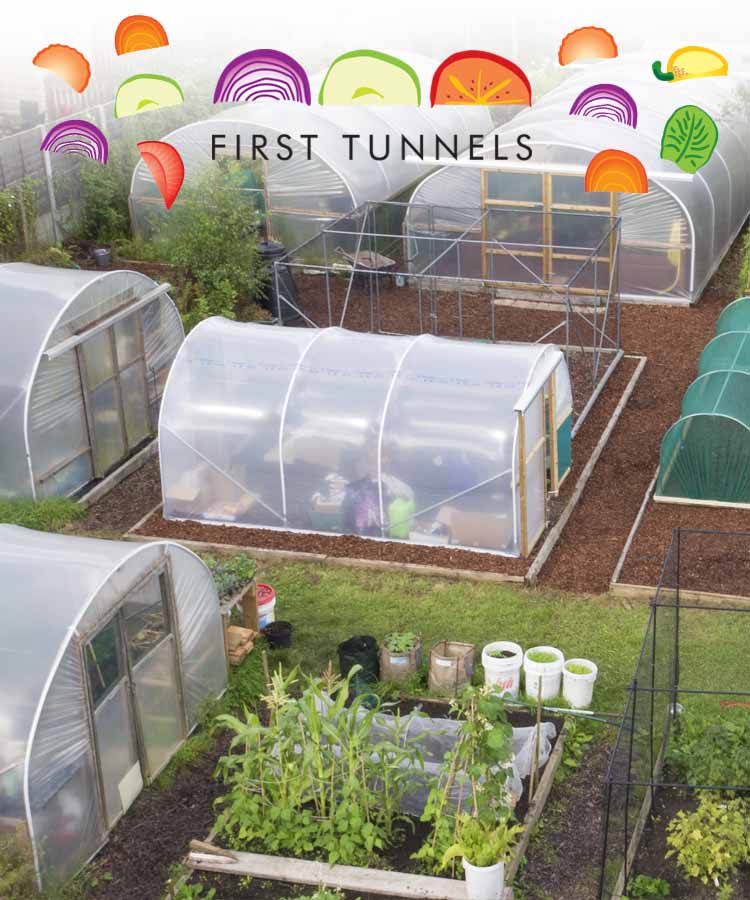A herb spiral is a landscaping idea for your polytunnel which will allow you to grow a larger quantity of different herbs in a smaller area. By raising a mounded spiral in which to plant herbs, you can create a range of habitats in a given space, meaning that moisture-loving plants like parsley can be grown close to dry-land herbs like rosemary and thyme.
In a polytunnel, where you can closely monitor the environmental conditions, it will be even easier to successfully grow herbs when you create a herb spiral. A polytunnel is a good place for a herb spiral as it will be sheltered and protected from the worst winds. Growing herbs in a polytunnel is beneficial because the herbs can help other growing plants by repelling certain pests, and by attracting beneficial insects and predators of pests.
The first stage in creating a herb spiral is building the spiral structure, which will provide a growing area which winds down clockwise from the top, at the centre, to the base, on the cooler, darker northern side. Your herb spiral can range in size from around 1m to 2m in diameter. Sticking within this sort of space will be best, as you will be able to fit in a wide range of herbs, whilst still being able to easily reach the top centre of the spiral.
You can create the structure for your herb spiral using bricks, stones, logs, or even household rubbish daubed together with clay. This basic structure should then be filled with compostable materials, with a layer of compost/ soil on top in which to plant your herbs.
Once you have created your herb spiral, it is time to plant your herbs. Mediterranean herbs such as rosemary, thyme and marjoram will like dry and fairly warm conditions. Place these at or near the top of the spiral, on the south facing side.
Sage and oregano will also enjoy a fairly dry position near the top of the spiral, though will benefit from the shade of the plants placed above them on the spiral. Coriander, dill and basil like more moisture than the above, but still need plenty of sun, so make sure they are on the sunny side of your spiral.
Plants such as parsley, mint and chives will enjoy shadier and moister conditions lower down and on the cooler northern side of the spiral. Understanding the needs of any new herb you wish to plant will help you realise where each should be placed on your herb spiral.
